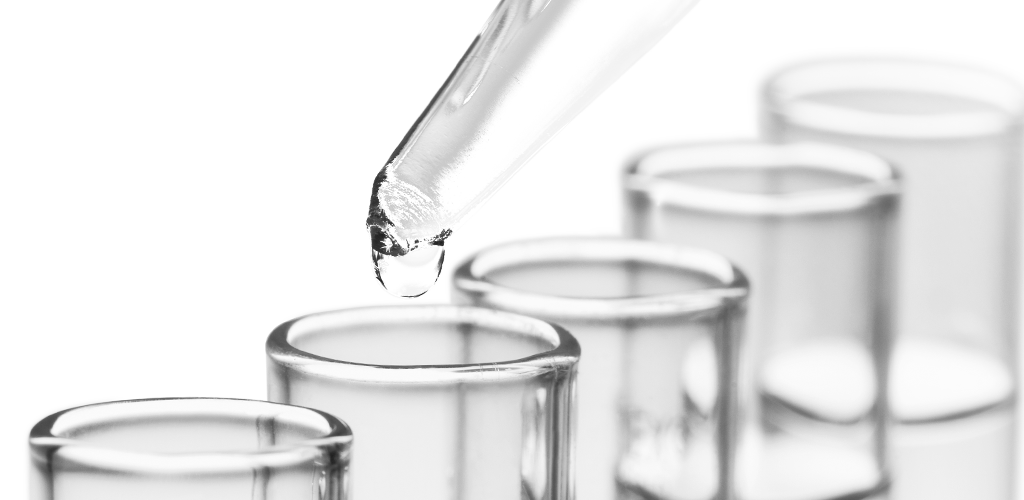Faktor VII
Biochemie
| Synonym | Proconvertin |
|---|---|
| Molekulare Masse | 50 000 D |
| Syntheseort | Leber |
| Halbwertszeit | 2 - 5 Stunden |
| Plasma-Konzentration | 470 µg/l bzw. 9,4 nmol/l |
| Normalwert | 70 - 120 % bzw. 0,7 - 1,2 E/ml |
Die Aktivierung des Gerinnungssystems erfolgt durch Freisetzung von Gewebe-Thromboplastin (Tissue Factor) aus verletztem Gewebe. Dies führt zur Aktivierung des Faktor VII zu Faktor VIIa. Am Komplex aus Gewebethromboplastin und Faktor VIIa findet in der Folge die Aktivierung des Faktor X statt. In einem positiven Rückkopplungsmechanismus aktiviert Faktor Xa den Faktor VII. Der Faktor IX wird durch Faktor VIIa aktiviert („Josso-Schleife“). Die Bildung des Faktor VII ist Vitamin K-abhängig.
Klinische Bedeutung
Ein angeborener Faktor VII-Mangel ist selten. Ein erworbener Faktor VII-Mangel wird durch einen Vitamin K-Mangel, Lebererkrankungen, Verlust- (z. B. massiver Blutverlust) und Verbrauchskoagulopathien verursacht. Als Folge eines Faktor VII-Mangels sind Blutungen zu beobachten. Erhöhte Faktor VII-Werte, wie sie auch in Abhängigkeit vom Alter und Körpergewicht, bei Einnahme oraler Kontrazeptiva, postmenopausal, in der Schwangerschaft, postoperativ und in Phase I einer Verbrauchskoagulopathie festgestellt werden, gelten als Risikofaktoren für kardiovaskuläre und zerebrovaskuläre Erkrankungen. Auch bei akuten Thrombosen wird ein Zusammenhang mit erhöhten Faktor VII-Spiegeln diskutiert.
Indikation
- Diagnose eines bislang unbekannten, hereditären Blutungsleidens
- Ermittlung des Spiegels bei einer Antikoagulanzientherapie mit Heparin oder Coumarin-Derivaten (während der Übergangsphase)
- Potenzieller Risikoindikator bei der koronaren Herzkrankheit
Literatur
- Avvisati G et al. Evaluation of a new chromogenic assay for Factor VII and its application in patients on oral anticoagulant treatment. Br J Haematol 45, 343-352, 1980.
- Carvalho J et al. Plasma Factor VII, triglyceride concentration and fibrin degradation products in primary hyperlipidemia: A clinical and laboratory study. Haemostasis 19, 83-90, 1989.
- Hoffmann C et al. Factor VII activity state in coronary artery disease. J Lab Clin Med 111, 475-481, 1988.
- Bladbjerg EM et al. Plasma concentrations of blood coagulation factor VII measured by immunochemical and amidolytic methods. Scand J Clin Lab Invest 60, 161-168, 2000.
- Seligsohn U et al. Coupled amidolytic assay for Factor VII: it´s use with a clotting assay to determine the activity state of factor VII. Blood 52, 978-988, 1978.
- Meade TW et al. Haemostatic function and Ischaemic heart disease: principal results of Northwick Park heart study. Lancet 2, 533-537, 1986.
- Van't Hooft FM et al. Two common functional polymorphisms in the promoter region of the coagulation factor VII gene determination activity and mass concentration. Blood 93, 3432-3441, 1999.
- Hedner U. Recombinant activated factor VII: 30 years of research and innovation. Blood Rev. Jun 29 Suppl 1, S4-8, 2015.
- Baumann Kreuziger LM, Morton CT, Reding MT. Is prophylaxis required for delivery in women with factor VII deficiency? Haemophilia. Nov 19(6), 827-32, 2013.

